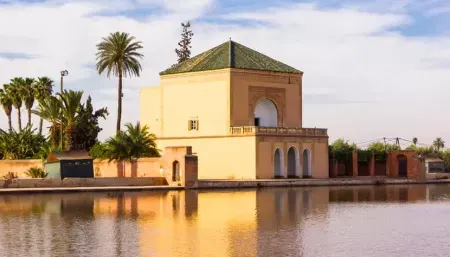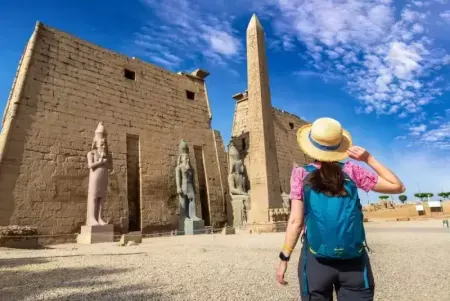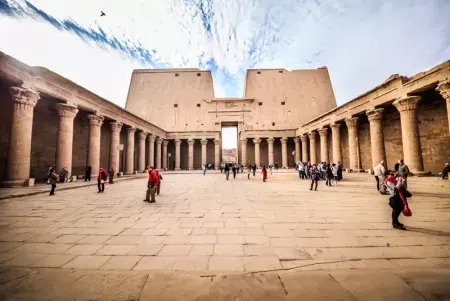Discover the best of Luxor tourist attractions, and Live the magic in the city of the sun Luxor, which is known in ancient times as Thebes and also the city of hundred doors. Many things to do in Luxor as it contains the most beautiful monuments, artifacts, temples such as Valley of the Kings, Karnak Temple, Luxor temple, and many more other impressive Luxor tourist attractions. So, Don’t miss the chance to figure these magnificent sights.
Showing 8 results
The Valley of the Kings is one of the most talked-about archaeological sites in all of Luxor, Egypt, famous for being the resting place of many pharaohs, including Tutankhamun. One of the most important historical treasures of Egypt, the site provides wonderful glimpses of ancient Egyptian burial practice and art.
Unveiling the Secrets of Hatshepsut Temple: A Journey Through Luxor's Hidden Gem!
Hatshepsut Temple on the West Bank of Luxor is a beautiful architectural beauty, dedicated to the great female pharaoh Hatshepsut. Its unique design and rock-cut location make it one of a kind among all temples, and it would give a taste of the real pompousness of ancient Egyptian history.
Discovering the Enchanting History of Luxor Temple: A Guide to Its Facts and Secrets
Located on the east bank of the Nile River in the city of Luxor, Luxor Temple is one of the most ancient and impressive structures in the world. It is a magnificent temple complex that was built during the New Kingdom period of Ancient Egypt, around 1400 BCE.
What was the aim of the Karnak temples?
What was the aim of the Karnak temples?
When you plan for a vacation to Egypt and decide to visit Karnak, you're paying a visit to the center of Egypt during the New Kingdom. This huge temple complex was in the middle of the traditional faith, while power was concentrated at Thebes (modern-day Luxor), and its significance is reflected in its enormous size. Additionally to its religious significance, it served as a treasury, place of work, and palace for the New Kingdom pharaohs. It's considered the largest temple complex ever constructed anywhere in the world.
The Temple of Hathor at Dendera: Your Ultimate Guide to Dendera Temple
The Temple of Hathor at Dendera on the western bank of the Nile represents a wonderfully preserved temple dedicated to the goddess Hathor. The temple with its astounding architecture, beautiful carvings, and well-preserved reliefs provides a fascinating insight into Egypt's religious and cultural history.
The Temple of seti i at Abydos
This temple is considered to be one of the most important religious sites in all of Egypt, and it's easy to see why. The stunning architecture and intricate carvings are a testament to the skill and dedication of the ancient Egyptians who built it. In this article, we'll take you on a journey through time and history as we explore the mystical wonders of the Temple of Seti in Abydos.
Uncover the Majestic Secrets of the Colossi of Memnon in Egypt
The Colossi of Memon, also known as the Colossi of Memnon, are undoubtedly one of the most awe-inspiring and enigmatic ancient structures in Egypt. Located on the western bank of the Nile River near Luxor, these colossal statues have stood the test of time, captivating visitors with their grandeur and mystery. Standing at an impressive height of approximately 18 meters, these imposing statues depict Pharaoh Amenhotep III, who reigned during the 14th century BCE. As you approach these majestic figures, you can't help but be overwhelmed by the sheer scale and artistic finesse of the Colossi of Memon.
The Valley of the Queens: A Journey into Ancient Egyptian Royalty and Culture
The Valley of the Queens, situated on the West Bank of Luxor, is designated as a burial site for the wives and children of pharaohs. This peaceful valley boasts vividly painted tombs and beautifully carved walls illustrating the lives and afterlives of Egypt's royal families.
.jpg)




